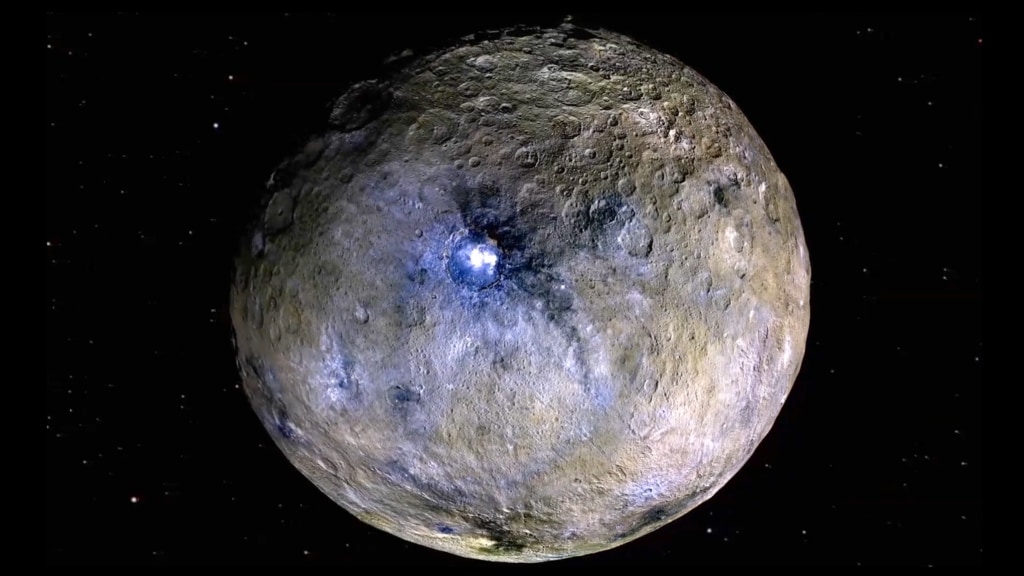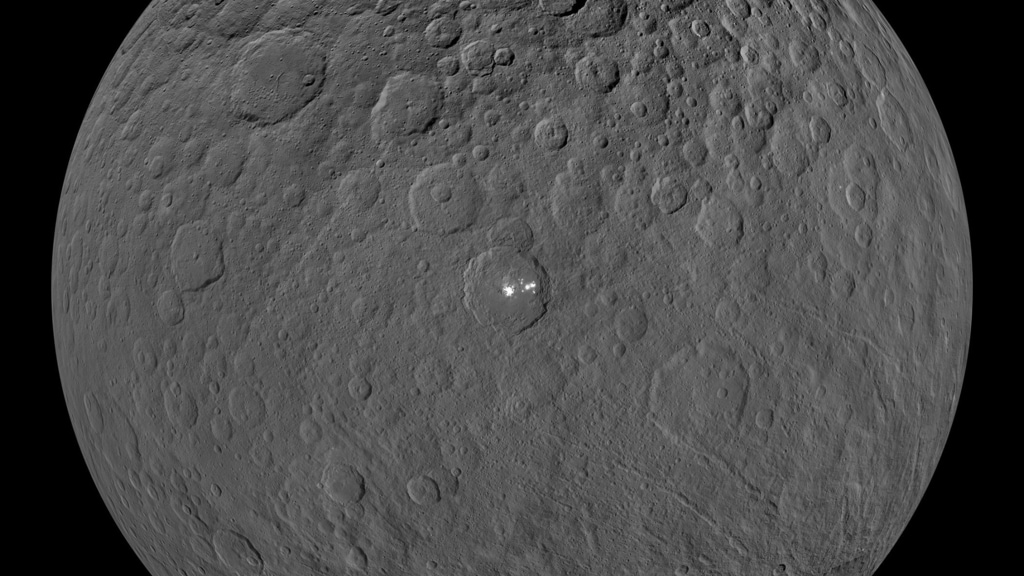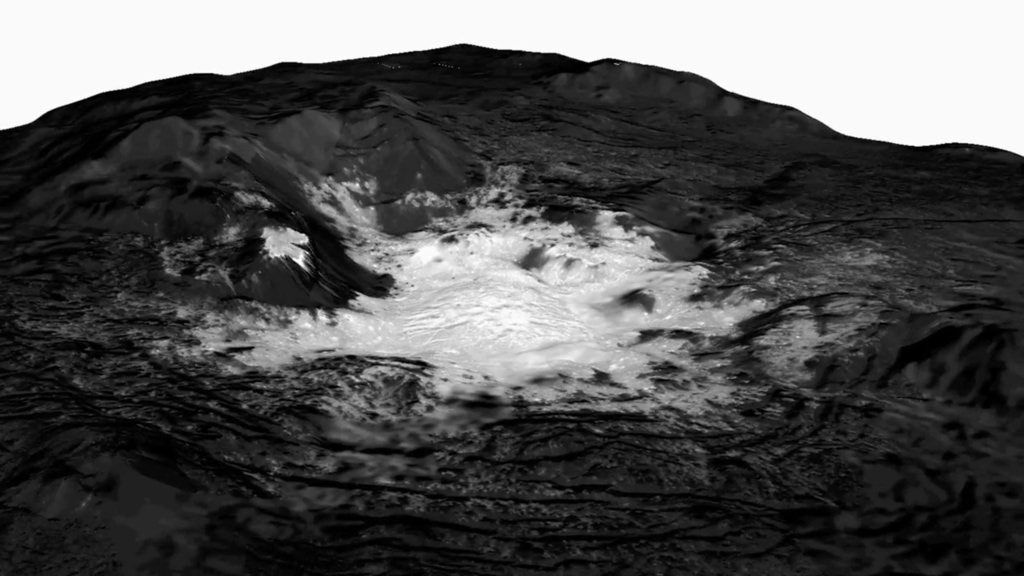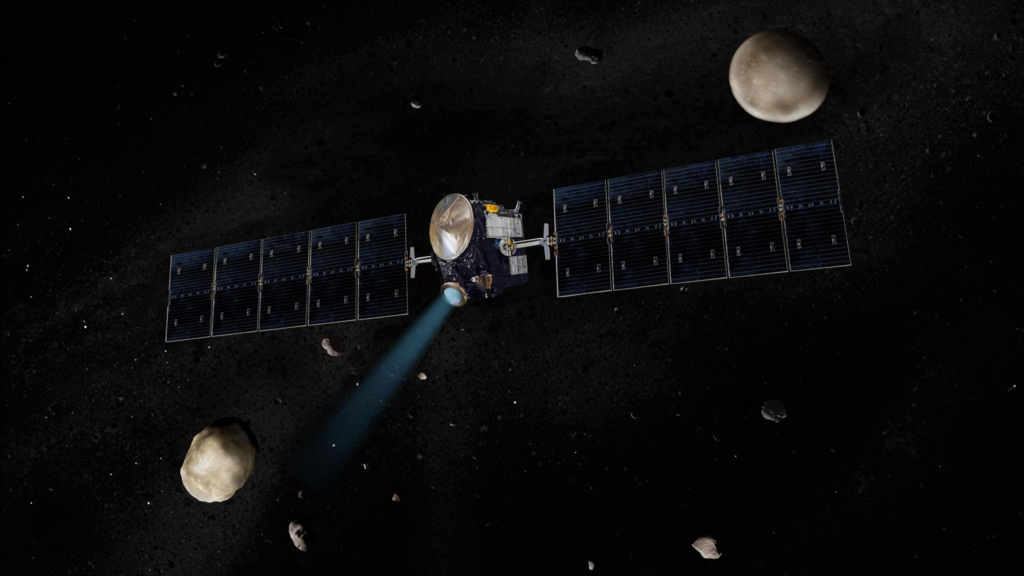Planets and Moons
ID: 13095

The surface of the dwarf planet Ceres is riddled with mysterious bright spots. Over 300 have been found in observations from NASA's Dawn spacecraft, which entered Ceres' orbit in 2015. Two of the most prominent bright spots, called faculae, are in the center of Occator crater. Cerealia Facula, in the center of the crater, consists of bright material covering a 6-mile-wide (10-kilometer-wide) pit, within which sits a small dome. East of the center is a collection of slightly less reflective and more diffuse features called Vinalia Faculae. All the bright material in Occator Crater is made of salt-rich material, which was likely once mixed in water. Although Cerealia Facula is the brightest area on all of Ceres, it would resemble dirty snow to the human eye. The presence of these spots (and the dome-like feature at the Cerealia Facula) suggest that Ceres may have internal geological activity. Scientists believe that some of the salt-laden material that causes the reflective bright spots could have been deposited from salty water driven to the surface by a small amount of gas, similar to champagne surging out of its bottle when the cork is removed. If this is true it would mean that Ceres is a dynamic system whose surface is being constantly modified. Watch the video to learn more.




Bright Spots





For More Information
Story Credits
Please give credit for this item to:
NASA/Jet Propulsion Laboratory (JPL)
For additional information about the video and images, please visit:
Ceres Rotation and Occator Center
The Bright Stuff: New NASA Dawn Findings at Ceres
Occator Perspective View
High Resolution Ceres View
Occator Crater and Ceres' Brightest Spots
Dawn Spacecraft with Vesta and Ceres (Artist's Concept)
NASA/Jet Propulsion Laboratory (JPL)
For additional information about the video and images, please visit:
Ceres Rotation and Occator Center
The Bright Stuff: New NASA Dawn Findings at Ceres
Occator Perspective View
High Resolution Ceres View
Occator Crater and Ceres' Brightest Spots
Dawn Spacecraft with Vesta and Ceres (Artist's Concept)
Short URL to share this page:
https://svs.gsfc.nasa.gov/13095
Keywords:
SVS >> HDTV
SVS >> App
NASA Science >> Planets and Moons
https://svs.gsfc.nasa.gov/13095
Keywords:
SVS >> HDTV
SVS >> App
NASA Science >> Planets and Moons







